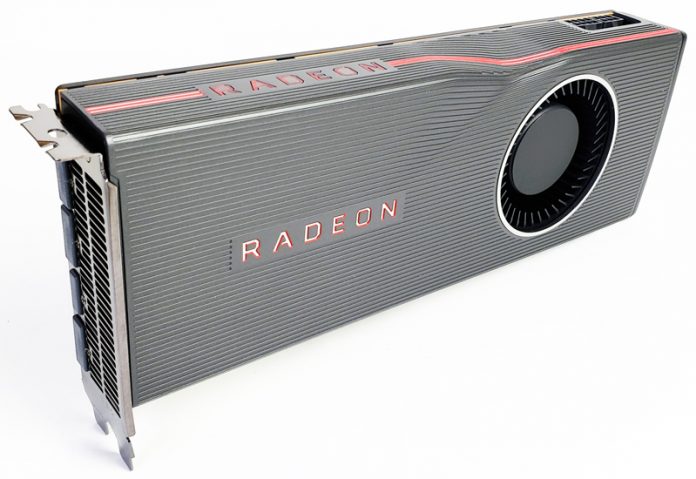Three months ago at the release of AMD’s new Radeon RX 5700 series graphics cards, we started testing both the Radeon RX 5700 and Radeon RX 5700 XT cards. As we mentioned in our review update, while the cards were garnering acclaim from gaming, we were seeing a driver set that was not ready for our compute-focused reviews. Over the past three months, we have been testing the AMD Radeon RX 5700 XT with each new driver update, and still, the AMD cards are not able to complete our full suite. We decided to present what we have at this point since we are so far into the cycle.
As a quick note here, this is a big difference to how NVIDIA views CUDA support. NVIDIA Quadro is certified to work with professional applications, but its GeForce cards are the company’s onramp to new customers. NVIDIA commits to CUDA working on its GeForce cards so someone can start with CUDA on GeForce and move up to Quadro. AMD not having similar software support for non-Pro Navi cards is something we would like to see fixed in the future. We are going to note where that came into play in this review.
AMD Radeon RX 5700 XT Overview
First, we see what the retail box for the AMD Radeon RX 5700 XT Graphics Card looks like, we note that these are the first PCIe 4.0 GPU’s to be released and we spot that specification on the front of the box.
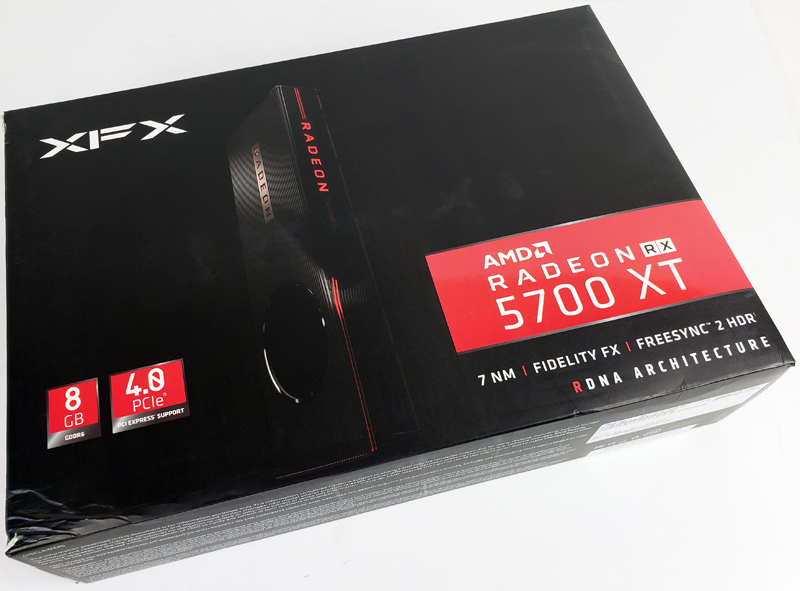
The AMD Radeon RX 5700 XT Graphics Card itself is solid and finished with a nice metal cover plate. The Radeon line is colored with a gray metal surface. Our readers may recall that the primary reason we started this series was to look at blower-style GPUs commonly used in higher-end workstations and servers since they can be packed more densely in higher-end systems.
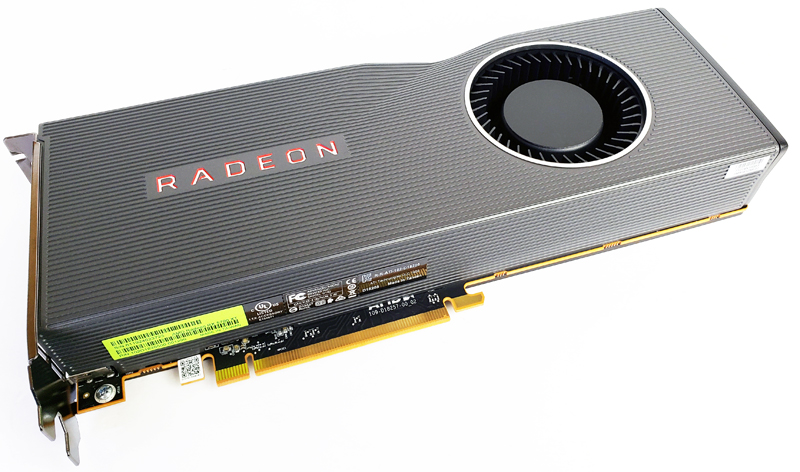
The AMD Radeon RX 5700 XT GPU sports a backplate to protect the circuits underneath and help with cooling. Backplates also help keep the card rigid so over time heavy coolers do not bend PCB.
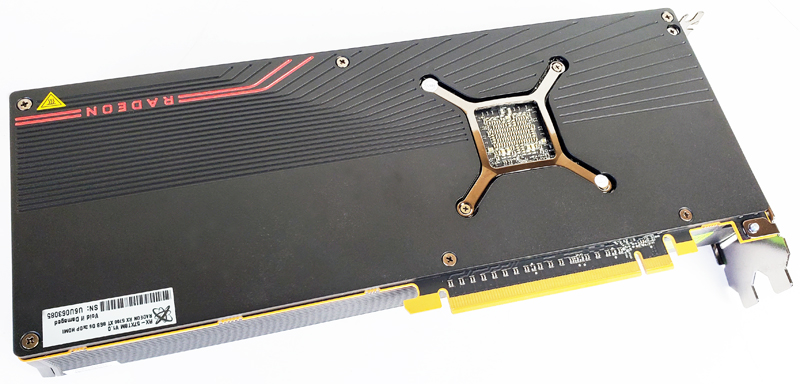
At the intake end of the AMD Radeon RX 5700 XT GPU, we see an 8-pin and 6-pin power connectors and a large air vent at the end of the card.
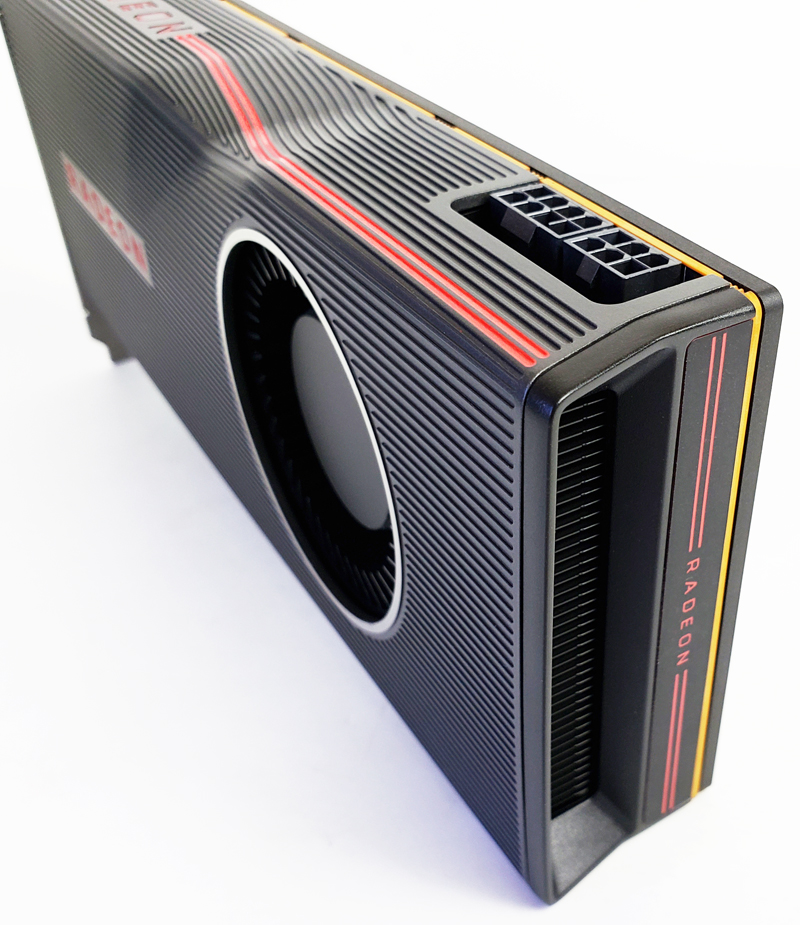
Video outputs include a single HDMI port and 3x DisplayPort 1.4 ports. The rest of the dual expansion slot bracket is consumed by a large air vent to exhaust hot air outside of the chassis.
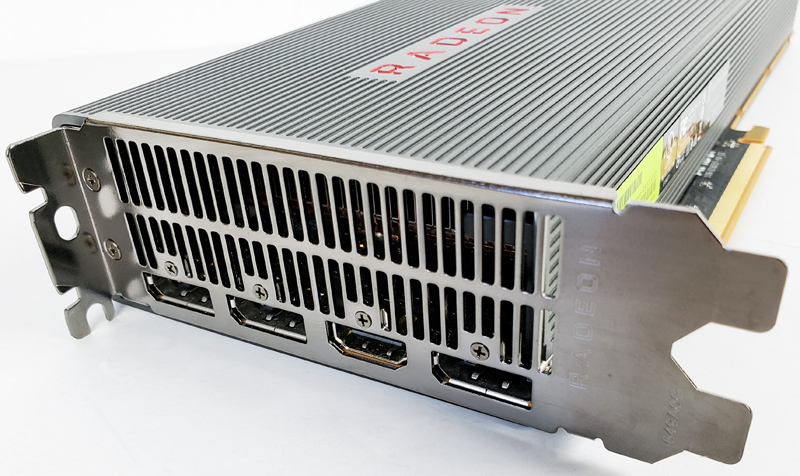
Next, let us take a look at the Radeon RX 5700 XT Graphics Card key specifications and continue on with our performance testing.

